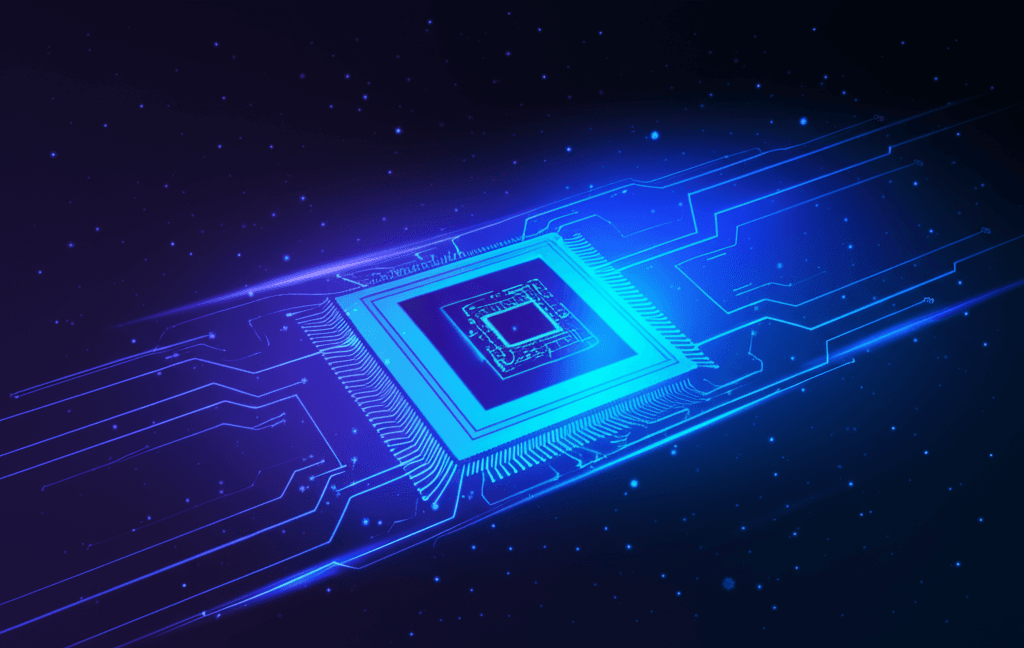Spacecraft Gain AI Brains with Micron's Radiation-Proof Memory Breakthrough
Micron's resilient memory empowers spacecraft with onboard AI and real-time processing, transforming deep space and Earth observation.
July 23, 2025

A new era of autonomous spacecraft, capable of processing vast amounts of data and making decisions in real-time, is dawning thanks to the commercial availability of a new type of high-density, radiation-tolerant NAND flash memory from Micron Technology. This development is a significant step forward for the aerospace industry, enabling a new generation of satellites and space vehicles to perform complex computational tasks at the edge, reducing their reliance on communication with Earth. The core of this innovation is a 256-gigabit, single-layer cell (SLC) NAND flash memory, specifically engineered to withstand the brutal environment of space.[1][2][3][4][5][6] This product is the first in a planned portfolio of space-qualified memory solutions from Micron, which will also include NOR and DRAM.[2][7][3][8][4][5][6] Its introduction marks the first time a major memory manufacturer has offered a high-density, radiation-tolerant memory solution of this kind.[1][2][3][4][5][6]
The ability for spacecraft to "think for themselves" is directly tied to the concept of edge computing, which involves processing data locally rather than transmitting it to a central server.[1][3][4] In the context of space, this means spacecraft can analyze sensor data, identify anomalies, and make autonomous decisions without the significant delays inherent in communicating with ground control.[2][3][4][6] This capability is crucial for deep space missions where communication lags can be substantial and for Earth observation satellites that generate massive datasets.[9][10] By processing data onboard, these satellites can filter and reduce the information sent back to Earth, preserving bandwidth and lowering transmission costs.[9] This shift towards in-orbit data processing is transforming space operations, moving from a model of remote control to one of autonomous operation.[11][2][3][12][4][6] The new memory from Micron is a key enabler of this transformation, providing the robust and high-capacity storage needed to run artificial intelligence and machine learning models directly on the spacecraft.[11][2][12]
To be effective in space, electronic components must be incredibly resilient. Space is a hostile environment, characterized by extreme temperatures, vacuum pressure, and constant bombardment from solar particles and cosmic rays.[8][4][5] Micron's new SLC NAND is specifically designed and rigorously tested to withstand these harsh conditions.[1][2] The memory undergoes a comprehensive testing process aligned with NASA's PEM-INST-001 Level 2 standards, which includes temperature cycling, defect inspections, and 590 hours of dynamic burn-in.[7] Crucially, it also undergoes radiation characterization testing to verify its reliability against total ionizing dose and single event effects, which can corrupt data and damage electronics.[7][12] This level of testing ensures that the memory can operate reliably for the long duration of space missions, which can span many years.[6][13] While this is Micron's first officially "space-qualified" product, their NAND flash technology has already been proven in orbit through collaborations with partners like Mercury Systems.[1][2][7][4] Mercury Systems utilizes Micron's memory in their solid-state data recorders (SSDRs), which are currently in use aboard NASA's Earth Surface Mineral Dust Source Investigation (EMIT) on the International Space Station.[2][7] This mission captures an incredible 100,000 spectra per second, demonstrating the memory's ability to handle high-volume data streams in a real-world space application.[2][8][4]
The implications of this new technology for the artificial intelligence industry are profound. The growing demand for AI-powered applications is pushing the boundaries of current memory and storage solutions.[14] By enabling robust edge computing in space, Micron's radiation-tolerant NAND opens up a new frontier for AI development.[11][12] AI algorithms for autonomous navigation, real-time data analysis, and anomaly detection can now be deployed directly on spacecraft, leading to more efficient and capable missions.[2][4][6] This move also has significant strategic importance, as Micron is the only U.S.-based memory manufacturer.[1][2][7][3][8][4][5][6] This provides end-to-end supply chain control, a critical factor for the aerospace and government sectors, ensuring quality, security, and supply continuity.[2][7][8][4] The company is also bolstering its U.S. manufacturing capabilities, including modernizing its facility in Manassas, Virginia, to further support the aerospace industry.[7][8][13]
In conclusion, the commercial availability of Micron's high-density, radiation-tolerant NAND memory represents a pivotal moment for the space and AI industries. It provides the foundational technology required for a new generation of intelligent, autonomous spacecraft. By moving data processing from the ground to the edge, this innovation will enable more sophisticated and ambitious space missions, from detailed Earth observation to long-duration exploration of our solar system and beyond. The ability for spacecraft to analyze data and make decisions in real-time will not only enhance mission effectiveness but also accelerate scientific discovery. As the space economy continues its rapid expansion, the demand for such advanced, reliable, and high-performance computing solutions will undoubtedly continue to grow, paving the way for a future where spacecraft are not just tools of exploration, but intelligent partners in discovery.[1][2][3][8][4][5][6]